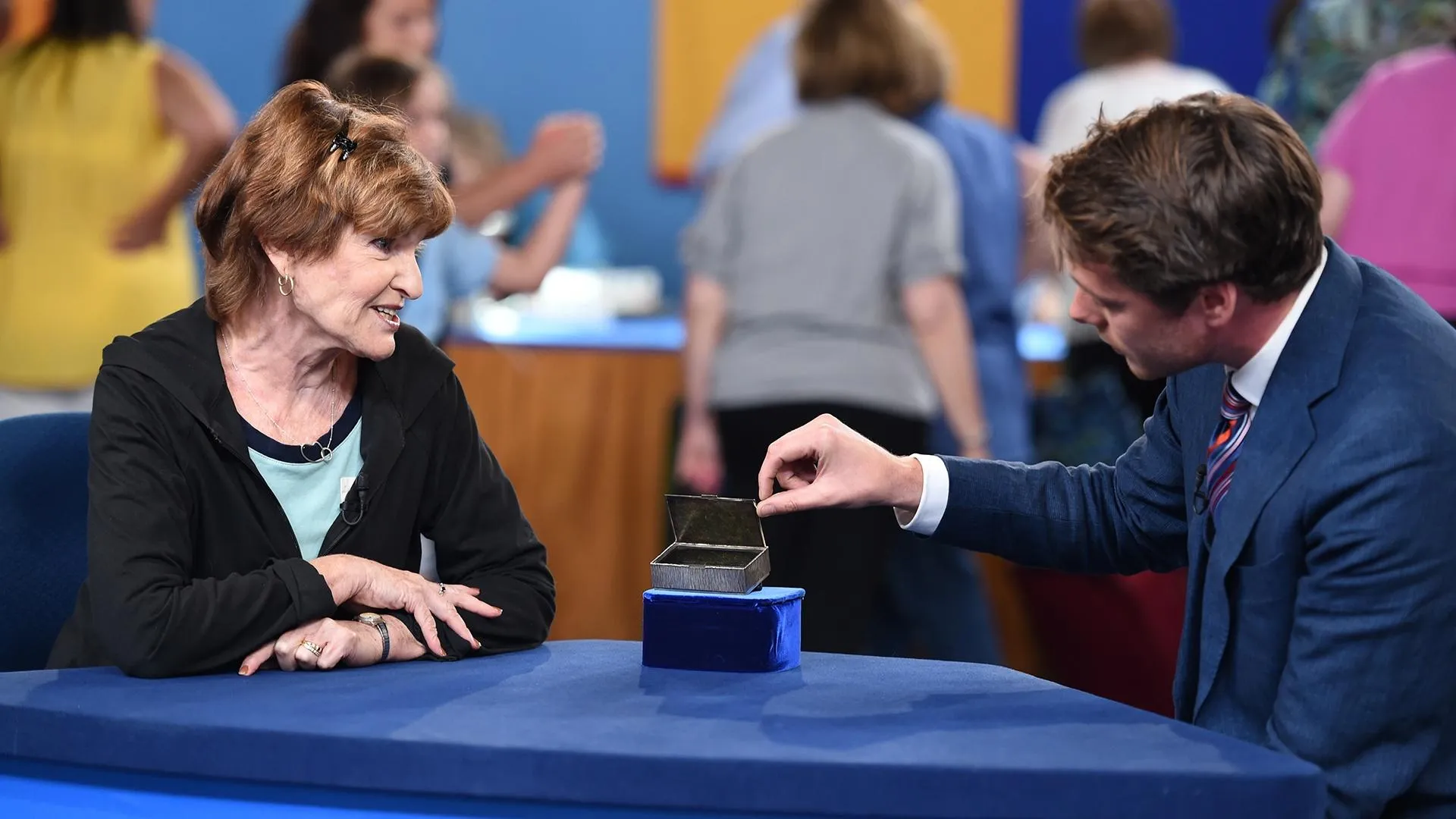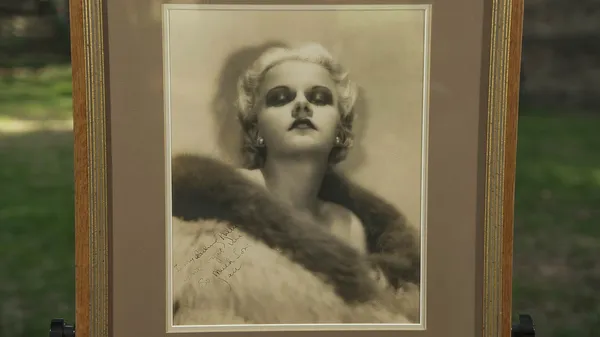GUEST: My father-in-law received it from his boss, Jasper Crane. My father-in-law was a chauffeur for Jasper, and Jasper was one of the vice-presidents of the DuPont Company. My father-in-law chauffeured him back and forth to work and whenever they went on trips, and he was just very good to him and replaced his clock and gave my father this one probably in the late '60s, I'm going to say. I had a sister-in-law who wanted his grandfather's clock, which was new when he got it, so he told me he wanted me to have this one.
APPRAISER: This is a 19th-century bracket clock, but more importantly, it's a 19th-century miniature bracket clock. Standard size for these is maybe twice this size. This form was very popular in the 18th and early 19th century, but the most popular today with collectors, and the most valuable, are the very large ones and the very small ones, like this. So it's very desirable because of its size. It has an ebonized case and this wonderful miniature handle here and these ball feet. If we open up the dial door, we can see that it's signed on the dial, "Grimaldi and Johnson." They were on the Strand, a street in London. They were in partnership between 1809 and 1828, so we know that this clock was made during that period.
GUEST: Wow.
APPRAISER: It has a brass dial with a silvered surface, and we can see it's got one winding hole, so it's a time-only clock; it does not strike. It's got these wonderful fish-scale side lights, and if we turn all the way around, we see that it is signed again, "Grimaldi & Johnson," and "London" on the back plate of the movement. Now, this is a miniaturized movement. It's a very small example similar to what would be in a larger bracket clock, but it's very, very high quality. It's a very well-made movement, and this would have been expensive in its day. A conservative auction estimate for this clock would be $6,000 to $8,000.
GUEST: Oh, my goodness. (laughing) I'd rather have it than the grandfather clock.
APPRAISER: I'm sure you would.











